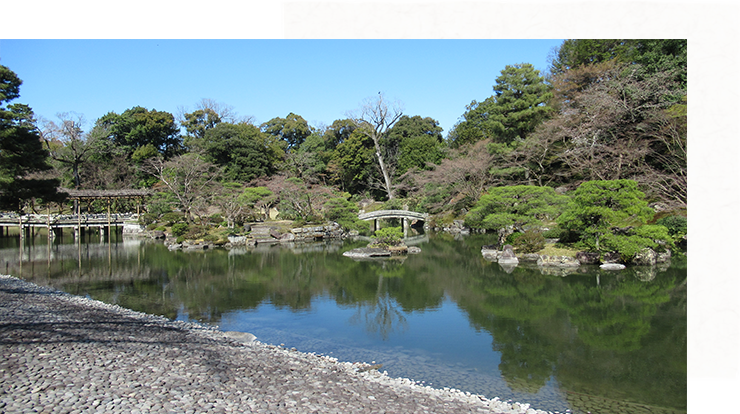A green landscape stretches around two ponds
Kyoto Sento Imperial Palace was built at the beginning of the seventeenth century as a palace for Emperor Go-Mizunoo (1596–1680) who abdicated from the throne. Later, there were several fires and reconstructions; however, now there are no buildings, and only the garden remains.
The garden is said to have been created in 1636 by Kobori Enshu (1579–1647), an official of the Tokugawa shogunate who also designed the Ninomaru Garden at Nijo-jo Castle and other gardens. It is also said that the garden was modified by Emperor Go-Mizunoo 28 years later in 1664. Visitors can stroll around the North Pond (Kitaike) and South Pond (Minamiike) of this kaiyushiki teien stroll garden, a garden designed to be appreciated while walking along its paths, and take in the scenery that changes in each of the four seasons.
The adjacent Kyoto Omiya Imperial Palace to the north of Kyoto Sento Imperial Palace was built as a palace for Tofuku-monin Masako (1607–1678), empress of Emperor Go-Mizunoo and daughter of Tokugawa Hidetada (1579–1632). Afterwards, it was used as a palace for the empress dowager and others. Like the Sento Imperial Palace, Kyoto Omiya Imperial Palace was repeatedly destroyed by fire. The present building was built as a palace for Empress Eisho (1835–1897), empress of Emperor Komei (1831–1867), and today, it is used as an accommodation facility by the emperor and the crown prince as well as by state guests during their visits to Kyoto.



